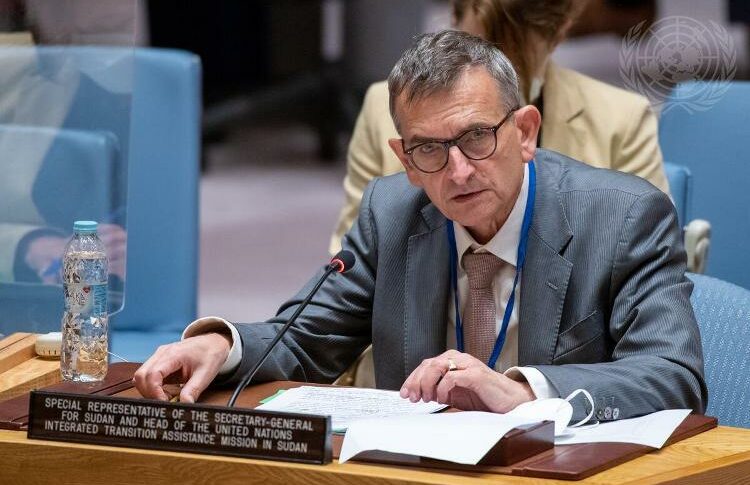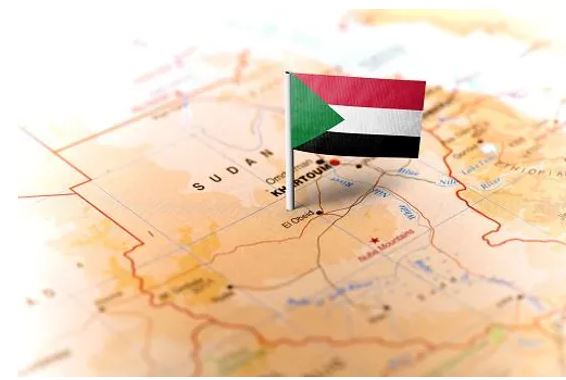Experts Argue About Fertility Rate In Sudan
08 March, 2020
Dr. Mohamed Alhafiz (right)
KHARTOUM (Sudanow) - The Sudan Human Reproduction & Embryology Society is citing an increase in infertility among Sudanese. The Society says 15- 20% of Sudanese women are unable to give birth.
Addressing the Society’s 12th Annual Conference, Gynecology Consultant Mohamed Alhafiz attributed the drop in fertility in the country to malnourishment, sexually transmitted diseases, late marriage, husbands’ absence from homes because of travel, the civil war, the use of mercury in mining operations and nicotine consumption.
The United Nations data cites a decline in Sudan’s fertility rate from 4.69 in 2019 to 4.43 this year. Ten years ago it was 5.00 while in 2000 it was 5.65
For her part developmental economics specialist, Dr. Majda Mustafa Sadiq does not consider the 15- 20% infertility rate a worrying problem. She said Sudanese women, just like their peers in the Africa Sub- Saharan region are considered fertile.

She said the complaint is because of the prevailing culture in this region of having a lot of offspring in the family. Every society has its own reproduction philosophy and family planning. However, the ideal birth rate level in every country is based on population size and the economic potential, she said.
Generally, infertility is attributed to hereditary problems, problems of less fertilization, masculine problems, problems of the Polycystic ovarian syndrome and Fallopian tube obstruction.
She also noted that the Sub- Saharan region is also known for its infantile mortality. But studies indicate the development factors like the expansion of education, the rise in the welfare level, the progress in medical care as possible factors behind the drop in infantile mortality.
Some studies have proved a correlation between the population size and the economy, Majda said. Many economists tie the development factors to women fertility.
In Sudan, however, there is no indication that the decline in the economy had impacted a drop in fertility. A proof of this according to Dr Majda is that population growth is on the rise (Sudan population was estimated at 42.8 million people in 2019 and 34,5 in 2010) due to the decreasing child mortality, because of the improving health care and the rising health awareness, while the birth rate has remained the same or saw a little drop. This qualifies the Sudan to delve into the second stage of demographic shift (the stage of early population increase). It became obvious that a group of factors had contributed to the relative drop in the levels of fertility in Sudan. Top on these come some changes that occurred in marriage traditions. One of these changes is the rise in marriage age among females because of the rising female education and the tendency among females to obtain salary jobs. This new role obliges females to provide more time for their jobs at the expense of childbirth, according to Dr. Majda.
Dr. Majda has also noted a drop in married women between ages 20-29.

Regardless, marriage and its consequent childbirth are important traditions in Sudan. The 2008 population census results had shown that more than half of the Sudanese females get married before 19, she said.
Similarly, fertility reports show a clear difference in fertility between rural and urban areas. For, while the overall birth rate is 6.4 children per family in rural areas, it is 5.1 in urban areas. This could be explained in that urban females have better education and employment opportunities and have better access to family planning services.
In addition, there is an increase in demand for offspring in rural areas, livestock herding communities in particular.
In the latter case a family needs no less than three sons to be able to look after their herd instead of hiring others to do the job.
In farming communities, families also need more hands for work. In this case there is also need for girls to collect wood and prepare meals and to fetch water for the rest of the family. These girls may also be needed to look after small domestic animals. Both boys and girls are viewed as an economic asset in an inadequately protected community.
“The increasing population is an important problem facing countries, because of its impact on natural resources and national wealth. Pressure on natural resources may result in scarcity in the means of living, thus impacting the state and its inhabitants,” said Dr. Majda.
According to her, the situation in the Sudan may be different from other countries, given the country’s yet to be tapped rich natural resources.
Psychologist Dr. Maaz Sharfi shares Dr. Majda her view about Sudan’s need for a bigger population “to cope with its vast area that has become a target of the ambitions from neighboring countries, the periphery in particular.”

For this Dr. Sharfi contends that Sudan “needs double the existing population in order to avoid the problems facing some European countries that have been forced to seek labor from across the borders.”
Regardless of other impacts infertility, according to WHO, is a disease of the reproductive system and needs of couples who desire pregnancy should be met. Fertility treatment centre are on the rise in Sudan particularly in the capital towns of Khartoum. The Nile Fertility Center was launched in 2010 under the supervision of Dr. Yagoub Mohamed Abdelmajid, the pioneer of test tube medicine. This center was then followed with the Adam and Eve Center, Banoon center and a number of private centers.
Dr. Mohamed Alhafiz said Sudan needs the establishment of 50 more fertility centers in addition to the existing 11 centers, 8 of which are inside Khartoum.
He also called for increasing the number of fertility specialists to complement the work of the existing 60 specialists.
Dr. hafiz has, however, indicated a progress and what he called ‘a qualitative turn’ in the treatment of infertility through the freezing of sperms and eggs and the use of medical endoscopes for medical diagnosis.
E N D
YH/AS








